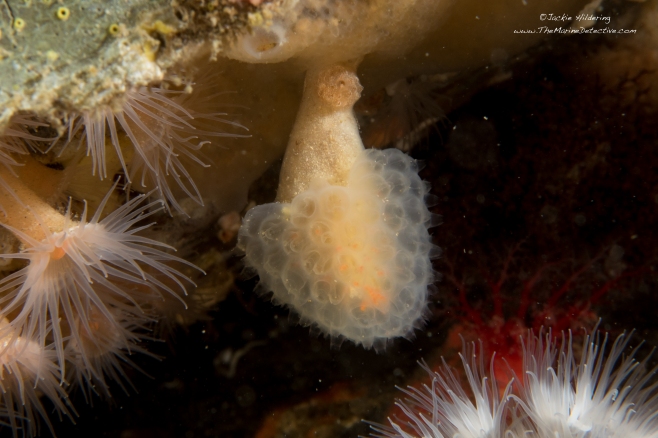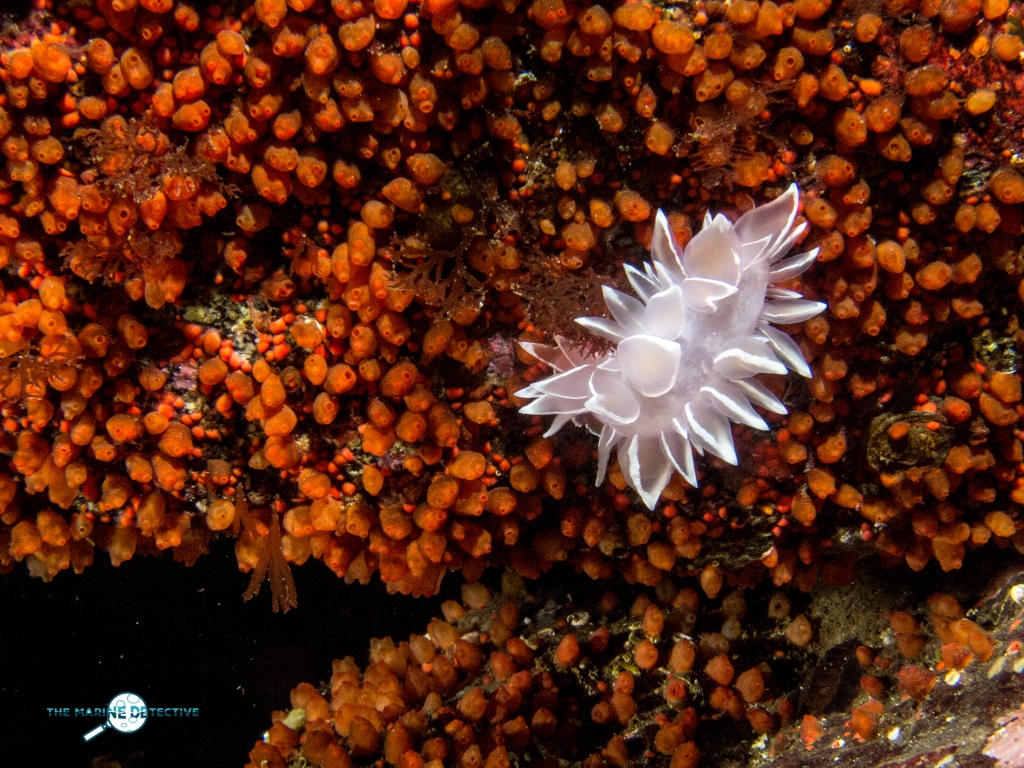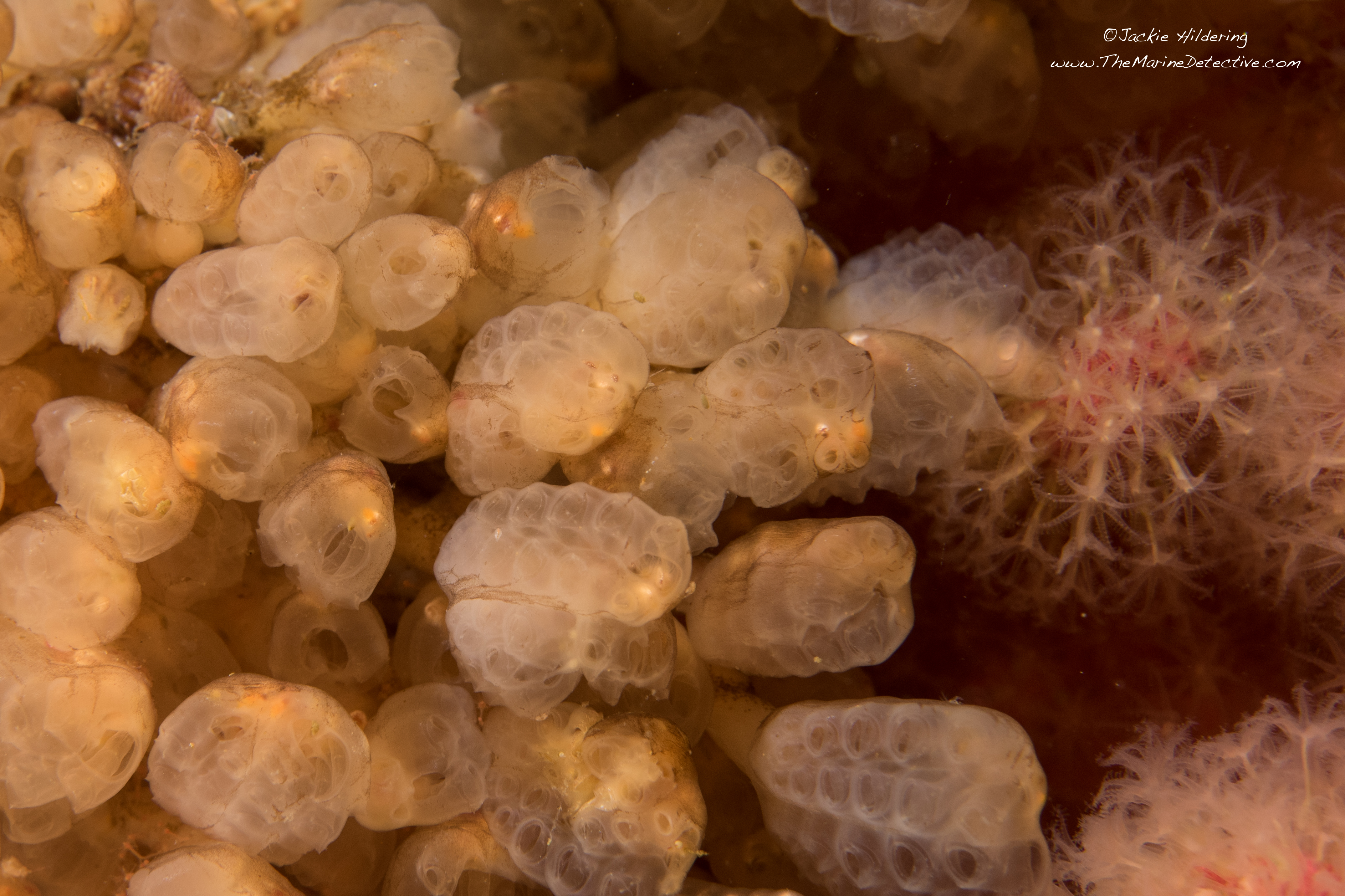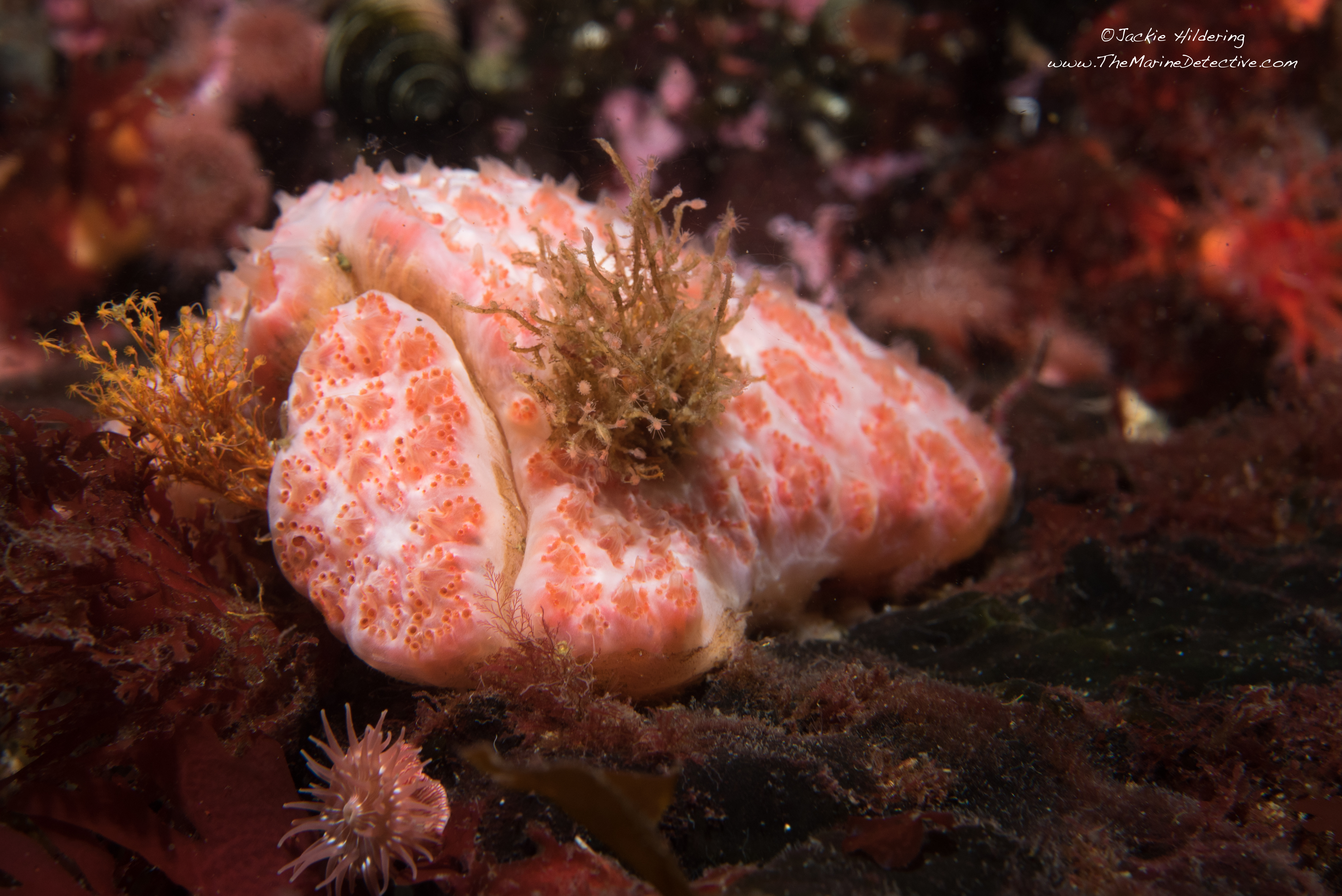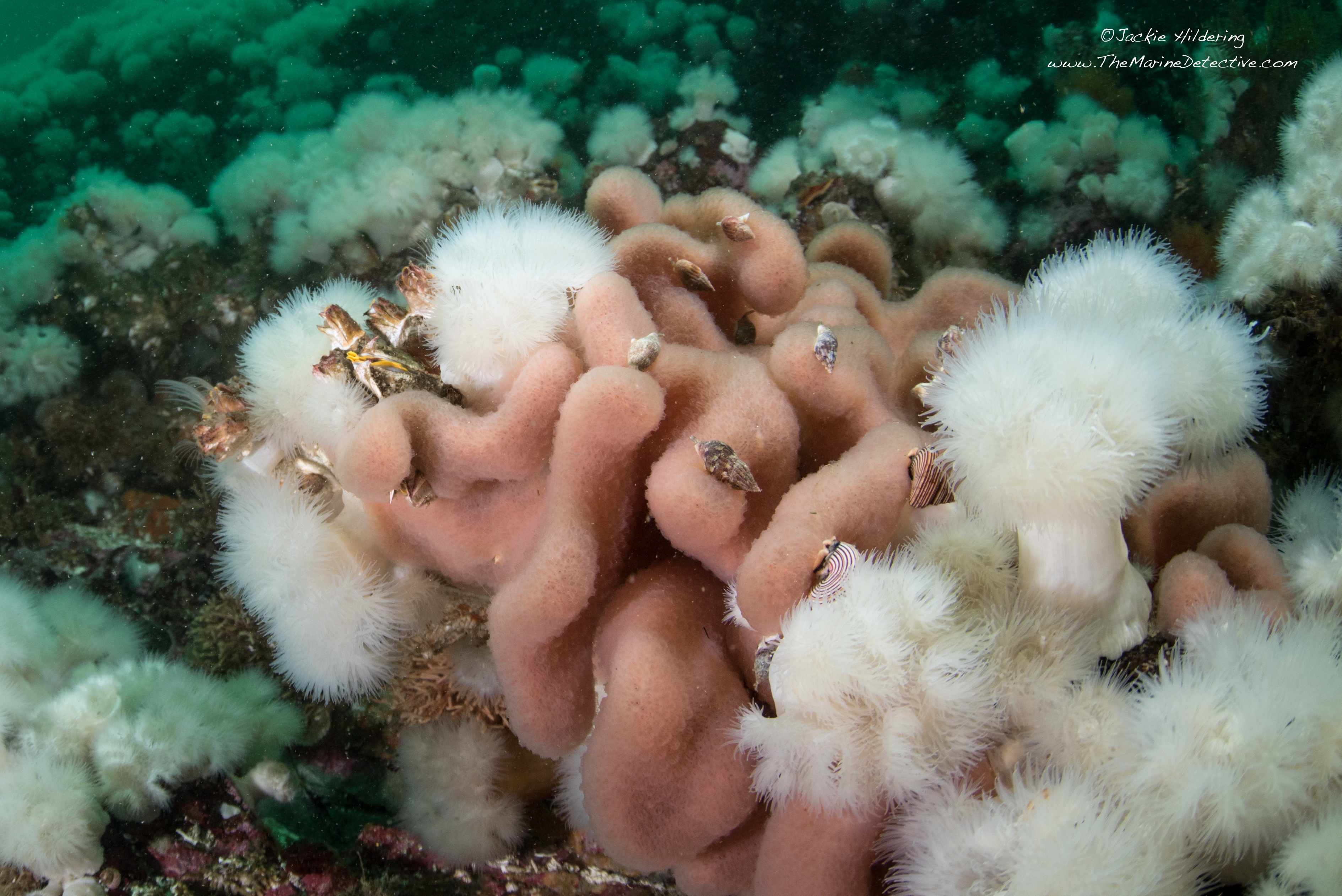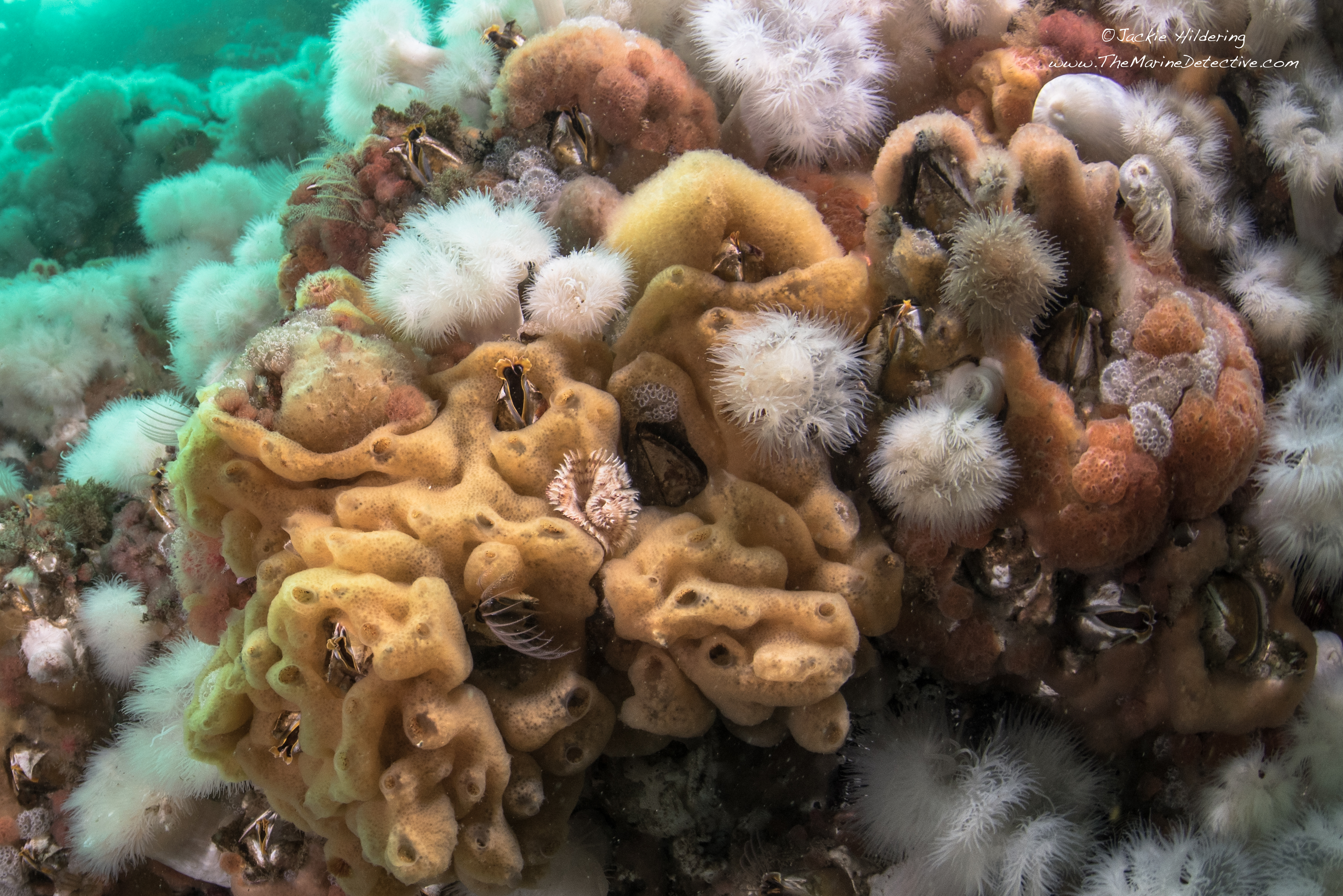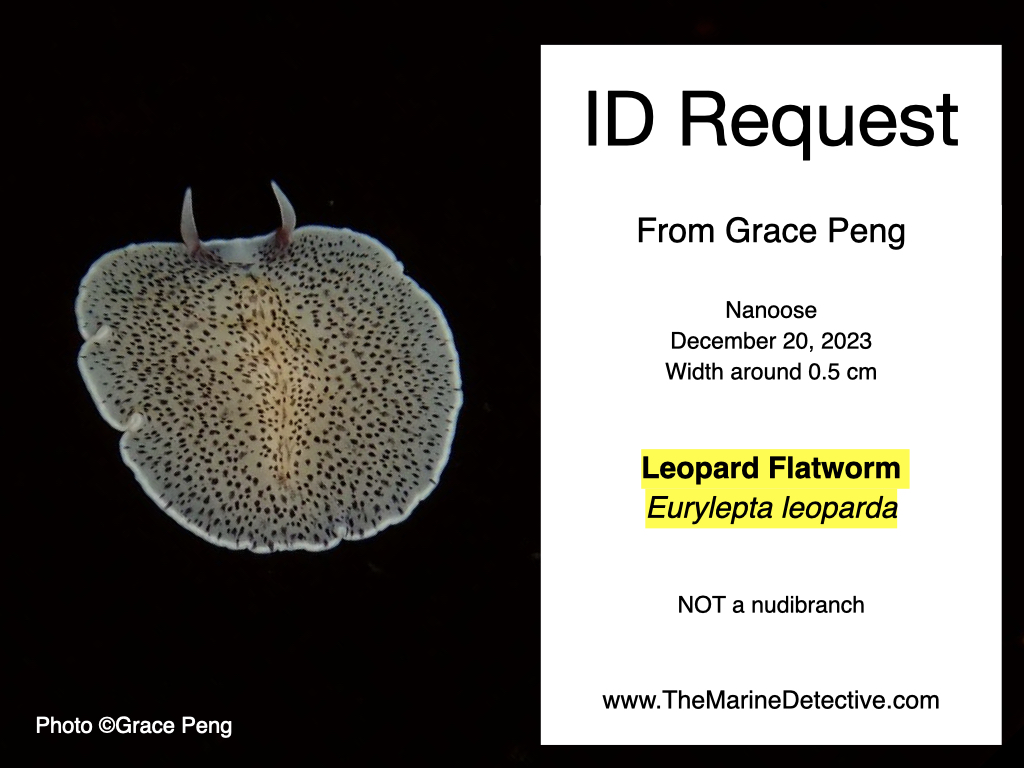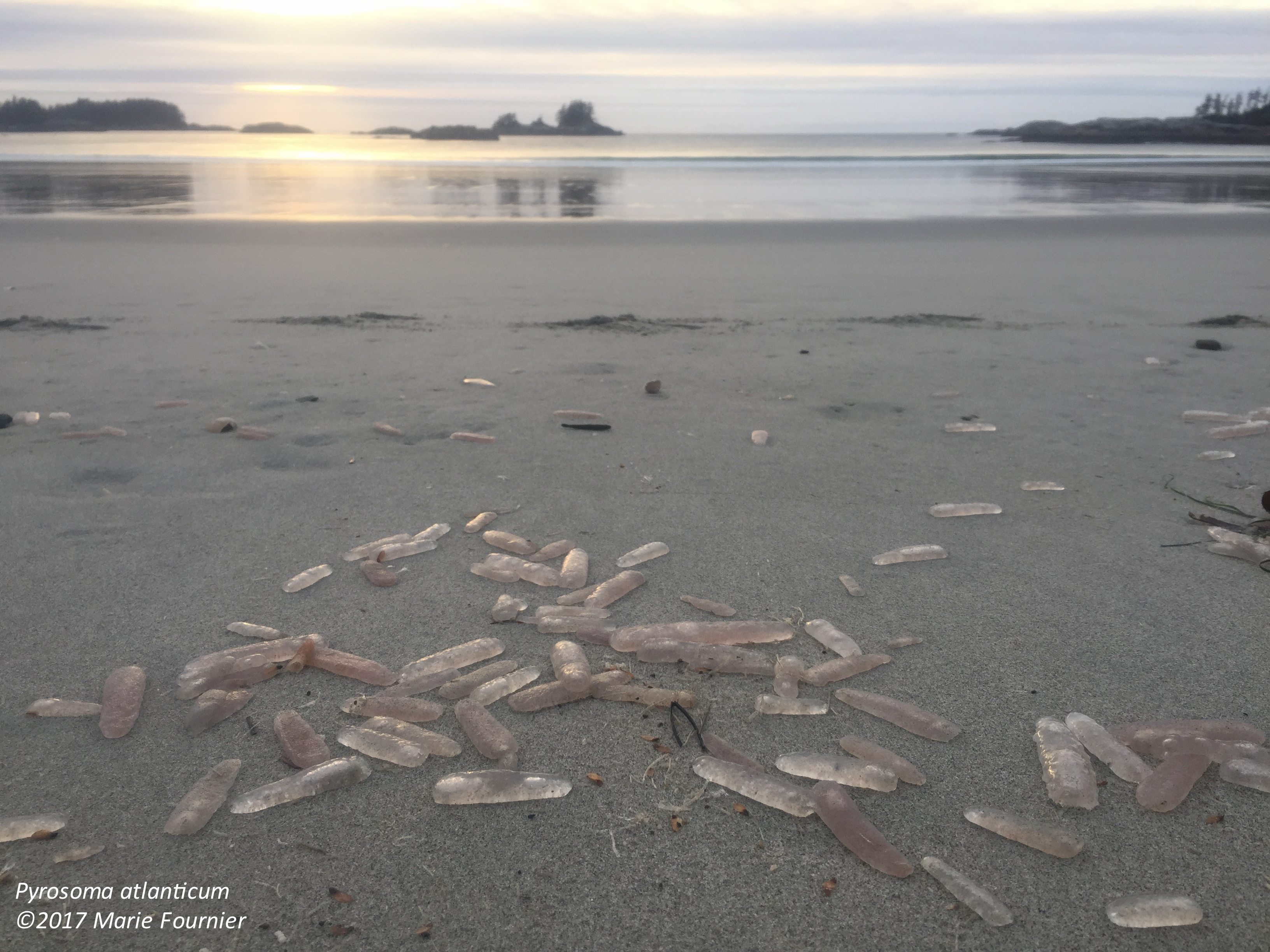Hurts My Brain – Salp Chain!
These extraordinary animals are not jellyfish. In fact, they are more closely related to you than they are to jellyfish.
These are salps. They are planktonic tunicates with an astounding lifecycle and whose importance includes cycling of nutrients and reducing carbon.

When diving this past April, we happened to be in a bloom of the salp species “Salpa aspera“.
It was truly mind-rupturingly, staggeringly astounding to be carried in the current with so many chains of clones snaking by (they are jet propeled). Yes, I had to make up a new adverb just for this experience!
The stomach is the dark, circular organ you see in each individual in the chain (aggregate).
We also saw an individual break from the chain and move independently! More on that below.

Which species of salp?
I did not know which species of salp was all around me. Thankfully, I was able to tap into expertise far greater than my own. Moira Galbraith, Zooplankton Taxonomist with the Institute of Ocean Sciences, very generously shared her knowledge when I sent her my photos, euphoric observations, and request for an ID.
Moira’s answer to my ID request:
“By the size of the stomach and placement (red/green ball), the shape of the ganglion (the c-shape you can see at opposite end from the stomach) and the short projections along where the individuals are attached to each other; I would say that this is Salpa aspera. These have been washing up on beaches off the west coast of Vancouver Island. . ..
Each individual takes in water through the front and channels it out the back. There are muscles bands along the body which create a pulse or pump. Food is taken from the incoming stream and diverted to the stomach. The water going out the back allows the animal to propel itself through the water. Chains work together making it look like a snake or an eel moving through the water.”

Importance?
Salps can grow and reproduce VERY quickly when conditions are right. They are one of the fastest growing multicellular animal on Earth.
Salps are also big zooplankton.
As a result of their size and number, a whole lot of water gets filtered and the poop that comes out is bigger than the plankton that got consumed. These big “fecal pellets” sink and transport nutrients.
If the fecal pellets make it to the bottom of the ocean, they could carry carbon away from where it will enter the atmosphere. Further, when salps die, their bodies also sink quickly and could thereby remove more carbon from entering the atmosphere.

Lifecycle:
The chains are the “aggregate” form of the salp lifecycle. They are all female clones.
A male individual fertilizes the aggregate.
The females break-off from the aggregate and release a single embryo. The solitary females then go on to develop testes, become males and fertilize the aggregates.
Whoa! Imagine how astoundingly it was for us to watch an individual break from the aggregate and then move independently. If I understand the lifecycle properly, this would have been a female with an embryo.


Range:
Salpa aspera is “circum-(sub)tropica”l between 45° north and 45° south.
More information:
Madin et al., 2006:
“Development of such large populations is presumably made possible by the high rate and efficiency of filter feeding by salps, their rapid growth and their alternation of sexual and asexual reproduction. These characteristics permit a rapid population response by salps to favorable food availability, such as may result from seasonally high phytoplankton productivity in oceanic regions of water mass intrusions and mixing along fronts. In some locations, high population densities of salps can be produced in as little as a few weeks.”
Woods Hole Oceaonographic Institute:
“From their clear, blob-like appearance, you’d be forgiven for mistaking the salp for a jellyfish. But it turns out that these gelatinous zooplankton actually are more closely related to humans than to brainless jellyfish. Unlike the jellyfish, salps (and humans) boast complex nervous, circulatory and digestive systems, complete with a brain, heart, and intestines.
Salps use jet propulsion to efficiently glide through the ocean. They’re great at multitasking: while expanding and contracting their muscles to move, they’re also pumping phytoplankton-rich water through their feeding filters, taking in the nutrients they need to survive . . . .
When food is plentiful, they can quickly create more chains, and each salp can increase rapidly in size. This superpower makes them one of the fastest-growing multicellular animals on Earth. Like all good things, the salp bloom comes to an end when all their available food is consumed.
Found throughout the world ocean, salps play an essential role in the ocean’s biological pump. Because they feed on phytoplankton—which grow in the presence of sunlight and carbon dioxide—salp poop is extremely rich in carbon. When these fecal pellets (and dead salps) fall to the seafloor or are snapped up by other twilight zone creatures, it’s like putting carbon into a bank vault.
The carbon remains at the bottom of the ocean for years, if not centuries, helping regulate our climate. Scientists don’t yet have an accurate assessment of how changes in salp numbers and distribution could affect the ocean’s carbon cycle—and impact climate change—but it’s clear that these critters play an important role.”

New York Times article about the research of Sutherland and Welhs (2017).
[Note that this research was on two different species of salp.]
“Meet the salp. It typically lives in deep waters, where its barrel-shaped body glides around the ocean by jet propulsion, sucking in water from a siphon on one end and spitting it back though another. It swims alone for part of its life. But it spends the rest of it with other salps, linked together in chains arranged as wheels, lines or other architectural designs . . .
Over years of watching them swim in chains, she [Dr. Sutherland] made a surprising discovery. They synchronize their strokes when threatened by predators or strong waves and currents. But while linked together in day-to-day life, each salp in the chain swims at its own asynchronous and uncoordinated pace. Counterintuitively, this helps salps that form linear chains make long nightly journeys more efficiently.
The life story of the sea salp is peculiar. Each one starts life as a female, then switches to male . . .
Making chains is part of their life cycle, and if these chains break, they don’t link back together. Each salp lives only a few days or a month in two stages: solitary, and in a colonial chain. A solitary salp gives rise to a colony of genetically identical salps asexually. The salps are connected in a chain that starts as a coil around the solitary salp’s gut. It grows over time and eventually breaks free, the beginning of the colony phase. Each individual within the chain will reproduce sexually. Through spawning, a male’s sperm reaches a female’s egg, forming a baby solitary salp that eventually swims out of its parent. “That solitary will make a chain and so on,” said Dr. Sutherland. It’s a chicken-or-the-egg kind of situation.
Perhaps to enhance a salp’s reproductive success, many salps migrate vertically, from the deep sea toward its top at night and back down during the day. At the surface, they can congregate with a greater chance that the sperm of one hits an egg of the same species.
And salps in linear chains are particularly skilled at this migration, traveling thousands of feet each night, at speeds around 10 body-lengths a second. “That’s like running a marathon every day,” said Dr. Sutherland.
You might think that fast synchronized, coordinated swimming strokes would be the way to make that happen. But each salp in the chain pumps to the rhythm of its own built-in pacemaker.
The resulting swim isn’t as fast, but it’s smooth and sustainable, with less interference from the wakes made by individuals. It’s like the difference between a Porsche and a Prius, said Dr. Sutherland. A Porsche can accelerate quickly to top speeds, but a Prius is more fuel-efficient.”

I would estimate this one to be nearly 4 metres long. ©Jackie Hildering
Sources:
Henschke N, Everett JD, Richardson AJ, Suthers IM. Rethinking the Role of Salps in the Ocean. Trends Ecol Evol. 2016 Sep;31(9):720-733. doi: 10.1016/j.tree.2016.06.007. Epub 2016 Jul 18. PMID: 27444105.
L.P. Madin, P. Kremer, P.H. Wiebe, J.E. Purcell, E.H. Horgan, D.A. Nemazie (2006), Periodic swarms of the salp Salpa aspera in the Slope Water off the NE United States: Biovolume, vertical migration, grazing, and vertical flux, Deep Sea Research Part I: Oceanographic Research Papers 53 (5), 804-819
Nereus Program Our jelly-like relatives: Common misconceptions about salps
New York Times (2017) – It’s Better to Swim Alone, Yet Together, if You’re a Salp
Sutherland Kelly R. and Weihs Daniel (2017) Hydrodynamic advantages of swimming by salp chains. R. Soc. Interface.142017029820170298
Wood’s Hole Oceanographic Institute – CREATURE FEATURE – Salp





